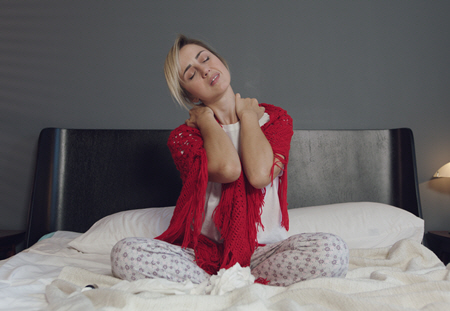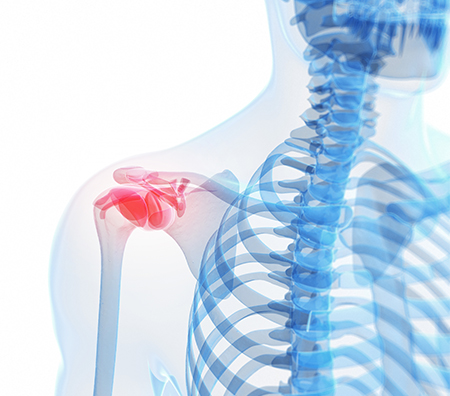 Shoulder injuries can happen when you least suspect them…
Shoulder injuries can happen when you least suspect them…
You probably know someone struggling with a shoulder injury but never thought it would happen to you.
And now, as you are sitting in pain, you wonder if your shoulder is actually injured or perhaps this is just a fluke and will go away on its own. So you wait.
Or perhaps you have gone to the doctor and have gotten a diagnosis and prescription for therapy, but you wait. Because it might go away, right? And you don’t have time to go to any more appointments!
As an office worker, you may feel shoulder pain from sitting at the computer all day at work. This starts gradually and then becomes debilitating to the point where a simple reach for your folder off to the left of your desk sends you a shock of pain.
As an athlete or a weekend warrior, you may develop pain in a shoulder due to overuse from repetitive pitching. You can no longer put on your jersey.
As a shorter person like me (I’m 5’1”), you may develop shoulder pain from always reaching overhead to grab things in higher cabinets. You try to rub and stretch your shoulder out, but you can’t avoid reaching overhead because they’ve designed your workspace for taller people!
Or maybe you woke up one day with shoulder pain “out of the blue.” I often hear this from clients…” I woke up like this…” followed by a lengthy investigation of the prior week’s activities to find ANY reason for the pain. If this sounds like you, you’re not alone. It is estimated that up to half of the population are walking around with shoulder injuries that may or may not cause pain. If they are non-painful, one event or action may simply be the “straw that broke the camel’s back.”
 Shoulder injuries can affect your life in so many ways…
Shoulder injuries can affect your life in so many ways…
You wake up in the morning feeling unrested because you couldn’t get comfortable. Your shoulder pain nagged at you all night, and no matter what position you tried, nothing seemed to help – your back, your side, nothing.
You have a full day ahead of you, except the mere thought of getting dressed and showering stresses you out because every little move hurts. Pulling that shirt on or adjusting your outfit can send you sharp pains. When will this get better? You start looking up one-handed techniques for dressing and wonder if this is what your future will be… you as the one-arm expert.
Have you heard of a torn rotator cuff?
This is just one of many common shoulder conditions. There’s also tendinitis, bursitis, impingement, dislocation, subluxation, frozen shoulder, etc., affecting people of all ages yearly.
The shoulder joint is very complex. It comprises three bones, seven primary ligaments that keep the shoulder in its place, nine muscles that give it strength, stability, and shape, and a network of nerves and vessels that provide sensation and muscle function.
Many life events can cause shoulder injuries. From going out for that monthly game of golf, over-reaching to the back seat of your car to retrieve your bag, repetitive lifting overhead, or in some cases, you can wake up with an onset of shoulder pain with no known cause.
 My grandmother developed a case of “frozen shoulder”…
My grandmother developed a case of “frozen shoulder”…
This condition is a thickening of the shoulder ligaments that leads to severe stiffness and pain.
For my grandmother, it developed after reaching into the back seat for her purse too many times.
Over-reaching behind you is considered an “awkward” posture for the shoulder joint. Overdoing this led to significant stiffness until she could not put on her shirt or brush her hair because she could not move her shoulder high enough to put her arm in the shirt hole or reach the top of her head with the brush. In addition, it was extremely painful.
You have options…
People with shoulder injuries often hate coming to the clinic to be stretched with traditional therapy. It’s painful; leaving work early, spending gas money, and driving in traffic is not a fun reward.
The good news is that most shoulder pain and injuries heal with self-guided movement and stretches in the comfort of wherever you feel best.
 Fortunately, shoulder pain and injuries can be treated!
Fortunately, shoulder pain and injuries can be treated!
And you don’t even have to leave your home!
During our first appointment, I will inspect your shoulder and assess your range of motion. We’ll also talk about what’s happened to cause your pain.
I’ll then develop a custom rehabilitation treatment plan specifically for you and your injury:
Active exercises…
A healthy shoulder relies on balancing all the surrounding sets of muscles. Part of your plan will include monitored exercises with me, providing tips on how to position yourself for shoulder flexion, extension, and internal and external rotation to maintain flexibility in all directions that your shoulder moves.
Self-assisted motion…
When stiffness is present, the shoulder needs some stretching. I’ll guide you in stretching using the wall, the edge of a table, or your other hand.
Postural changes…
Let’s not forget your posture. Posture is particularly important to help heal and reduce symptoms of a shoulder injury because poor posture can lead to an over-stretching of the muscles and ligaments on the backside of your neck/shoulder and a tightening of the muscles and ligaments on the front side of your neck/shoulder.
This imbalance can lead to increased pressure on the soft tissue structures (ligaments, tendons) between the scapula and the humerus of your shoulder. This can lead to conditions such as bursitis and impingement syndrome. Part of your plan will include exercises to glide the scapula bone (your “wing” bone) along the rib cage and strengthen these muscles to help support your posture and prevent an imbalance of musculature between the front and back muscles in your shoulder.
Activity modifications…
I don’t like telling people they can’t do their favorite things. However, I might tell you that you need to take a break from something that you do for a short period or to position your body differently so that there is less strain on the shoulder.
Tracking your progress…
Each week, I will ask you about your progress with your rehab treatment plan. What did you like, and what did you not like? What worked for you? And we can work together to change the things that aren’t working and revamp the plan as needed.
If you do not like to do stretching exercises, I can provide alternative positions or ways to perform stretching that can work better for you. After all, compliance is key. This won’t work if you are not enjoying this or if you don’t feel able to complete your program. There are a million ways to achieve a goal, and I will work with you to find another way of doing things so that we can resolve any issues that come up.
Waiting is delaying your healing.
Rehabilitating from a shoulder injury is never fun, but it CAN be convenient and innovative. Virtual hand therapy provides the flexibility of healing from your injury wherever you feel the most comfortable.
Don’t wait to address your pain or stiffness. Contact me today for a free 15-minute phone consultation to determine if this is the right fit for you: info@chrgtherapy.com.

